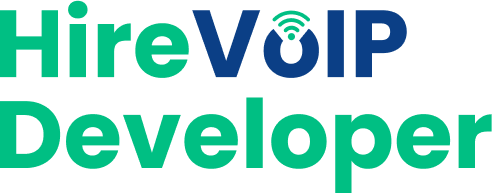When it comes to creating robust VoIP systems, Asterisk Dialplan is at the heart of Asterisk development. As a developer, optimizing your Asterisk dialplan isn’t just about writing clean code; it’s about ensuring your communication system is scalable, responsive, and resource-efficient. Whether managing a small-scale business communication system or a complex enterprise network, mastering Asterisk optimization techniques can significantly enhance your system’s performance. This blog will provide in-depth insights and practical tips on optimizing Asterisk Dialplan, guiding you through advanced Asterisk functions and commands to streamline your development process.
Understanding the Basics of Asterisk Dialplan Optimization
Optimizing an Asterisk Dialplan involves more than just knowing the right Asterisk Dialplan commands. It’s about crafting your dial plan to minimize resource usage and maximize performance. A well-optimized dial plan can reduce call processing times, lower system load, and improve overall system reliability. The first step is understanding Asterisk development’s core components and best practices.
A dial plan is essentially a set of instructions Asterisk follows to manage incoming and outgoing calls. Each dialplan consists of contexts, extensions, and priorities. By organizing these components effectively and using Asterisk functions wisely, you can create a streamlined process that minimizes potential bottlenecks.
Unlock Big Savings Today! Don’t Miss Out
Key Elements of an Efficient Asterisk Dialplan
Creating an efficient Asterisk Dialplan starts with mastering its essential elements: contexts, extensions, and priorities. Each element is vital in defining the behavior and flow of calls within your Asterisk system. Optimizing these components ensures smooth call processing and improves the overall performance and communication security network.
1. Contexts: Organizing and Securing Call Flows
Contexts in Asterisk serve as containers for your dialplan logic, allowing you to separate different call flows and define specific permissions for each. By effectively using contexts, you can segregate various functionalities within your dialplan, such as handling internal calls, incoming external calls, and voicemails, all while maintaining a clear and organized structure.
2. Extensions: Defining Specific Call Paths
Extensions are the specific instructions within each context that determine how Asterisk handles incoming and outgoing calls. Each extension typically corresponds to a telephone number, feature, or specific call action, such as dialing another extension or playing a message.
3. Priorities: Sequencing Operations Effectively
Priorities are used within extensions to dictate the sequence of actions that Asterisk will take. They ensure that calls follow a logical flow, executing each step in the correct order. Each step in an extension is assigned a priority, executed sequentially from the lowest to the highest.
By focusing on these key elements—contexts, extensions, and priorities—you can construct a highly efficient Asterisk dialplan. This foundational understanding, combined with advanced optimization techniques, ensures that your dialplan meets current needs and is scalable and adaptable for future growth. By maintaining a clear, organized structure and using resources efficiently, you’ll create a robust communication system that delivers reliable performance and security, meeting the demands of any business.
Advanced Asterisk Dialplan Commands and Their Optimization
Utilizing advanced Asterisk dialplan commands can dramatically improve the efficiency of your dialplan. Commands like GotoIf, ExecIf, and Macro are fundamental, but when misused, they can cause unnecessary complexity and degrade performance.
1. Efficient Use of GotoIf and ExecIf
Conditional branching commands such as GotoIf and ExecIf are powerful tools in the Asterisk development toolkit. However, overusing them or implementing complex, nested conditions can lead to performance issues. Optimize these commands by keeping conditions straightforward and evaluating whether simpler functions can achieve the same result.
Tip: Replace complex GotoIf conditions with simpler ExecIf or GotoIfTime where applicable. This approach reduces the dial plan’s complexity and enhances readability, making future adjustments easier.
2. Minimize Macro Usage
Macros in Asterisk can lead to recursive call flows that, while powerful, can also increase the processing load on your server. Whenever possible, replace macros with subroutines using GoSub, which are less resource-intensive and offer better control over call flow.
Asterisk Coding Tips: Prefer GoSub over Macro. GoSub uses local variables and can return to the point of origin, making your dialplan more manageable and less prone to errors caused by variable conflicts.
To sum up, leveraging advanced Asterisk dialplan commands effectively can significantly enhance the performance and maintainability of your Asterisk system. By simplifying conditional branching and minimizing macro usage, you can reduce the complexity and resource demands of your dialplan. Regularly revisiting and refining these command implementations will optimize your dialplan, ensuring it remains efficient and scalable as your communication needs evolve.
Optimizing Asterisk Functions for Performance Gains
Asterisk functions like RAND(), REGEX(), and EXISTS() are extremely versatile, but they can also be resource-heavy. Understanding when and how to use these functions effectively is crucial for Asterisk function optimization.
1. Use of RAND() in Asterisk Dialplans
The RAND() function is used to generate random numbers, which is often useful in call distribution scenarios. However, overusing RAND() can lead to unpredictable system behavior and unnecessary CPU cycles.
Optimization Tip: Limit the use of RAND() to essential operations. For example, instead of generating a random number for every call, consider using a round-robin method that distributes calls evenly without the additional processing overhead.
2. Streamlining REGEX() Usage
The REGEX() function allows for pattern matching within the dialplan. While powerful, it can slow down processing when used excessively or inappropriately.
Asterisk Dialplan Optimization: Use REGEX() only when necessary. If your application doesn’t require complex pattern matching, consider using simpler string comparison functions, which are faster and less CPU-intensive.
3. Efficient Use of EXISTS()
The EXISTS() function checks if a variable is defined. While seemingly harmless, calling EXISTS() repeatedly in a loop or within critical paths can degrade performance.
Optimization Strategy: Cache the results of EXISTS() checks where possible. If the state of the variable does not change during a call flow, there’s no need to repeatedly call EXISTS().
To maximize the performance of your Asterisk dialplan, it’s essential to not only understand the purpose of each function but also to employ them judiciously. By optimizing functions like RAND(), REGEX(), and EXISTS(), you can significantly reduce unnecessary load and enhance system responsiveness. Consistently revisiting and refining how these functions are used in your dialplan can lead to smoother call handling and a more efficient overall system. The key is to balance functionality with performance, ensuring that each function serves a clear and necessary purpose within your dialplan.
Avoiding Common Pitfalls in Asterisk Development
Every new or seasoned developer can fall into common pitfalls that affect Asterisk dialplan optimization. Any Asterisk developer trying to optimize their dialplan must understand these risks and learn how to avoid them.
1. Overcomplicating the Dialplan Logic
Simplicity is key in Asterisk development. A common mistake is overcomplicating the dialplan with unnecessary checks and redundant commands. This may increase processing times and make the dialplan harder to maintain.
Optimization Tip: Review your dialplan regularly and refactor it to remove redundant commands. Use comments effectively to document complex logic, ensuring anyone maintaining the dialplan can understand its flow without unnecessary overhead.
2. Neglecting Variable Management
Variables are powerful in Asterisk, but poor management can lead to bloated memory usage and slow performance. Local variables (__) should be used judiciously, and global variables (GLOBAL()) should be minimized to reduce memory footprint.
Best Practice: Use local variables within subroutines (GoSub) to ensure they do not persist beyond their intended scope. This practice not only saves memory but also prevents accidental data overwrites.
3. Inefficient Call Handling Strategies
A dialplan that handles too many processes concurrently can lead to a bottleneck, affecting the overall performance of the Asterisk system.
Asterisk Optimization Tip: Optimize call handling by using Asterisk dialplan functions like Queue to manage inbound call loads. Implement call limits and timeouts strategically to ensure the system remains responsive under load.
Avoiding these common pitfalls in Asterisk development can improve the performance and maintainability of your dialplan. By prioritizing simplicity, managing variables effectively, and optimizing call handling strategies, you can ensure a more efficient and reliable system. Monitoring and refining your dialplan will help you avoid potential issues, making your Asterisk development process smoother and more scalable. Remember, a well-optimized dialplan is not just about functionality; it’s about creating a seamless communication experience that evolves with your needs.
Leveraging Asterisk’s Built-In Debugging Tools
A critical part of Asterisk optimization is the ability to debug and monitor the dialplan effectively. Asterisk provides several built-in debugging tools, such as the logger.conf settings, VERBOSE(), and NOOP(). Using these tools efficiently can help you identify bottlenecks and optimize your dialplan.
1. Using VERBOSE() and NOOP()
Both VERBOSE() and NOOP() are invaluable for debugging but can clutter the console if overused. VERBOSE() provides detailed output, while NOOP() serves as a silent checkpoint. Strategically placing these functions helps track call flow without overwhelming the system with unnecessary data.
Asterisk Coding Tips: Limit the use of VERBOSE() to key points where detailed output is essential. For routine checks, use NOOP() sparingly to validate the presence of expected variables or call flow paths without additional output.
2. Efficient Log Management
Logs are essential for troubleshooting but can consume significant disk space and processing power if not managed correctly. Customize your logger.conf to capture only necessary information, reducing the performance hit on your system.
Optimization Tip: Regularly review and rotate logs to ensure they don’t consume excessive resources. Set log levels appropriately to capture critical information without creating unnecessary overhead.
By using these integrated debugging tools, you may learn more about the functionality and behavior of your Asterisk dialplan. Using them judiciously lets you effectively troubleshoot issues and refine your dialplan, leading to a more efficient and responsive communication system. Your Asterisk system will continue to adapt to the changing needs of your company with constant monitoring and adjustment, ensuring excellent performance and dependability throughout time.
Advanced Asterisk Function Optimization Techniques
Beyond the basics, advanced optimization techniques can take your Asterisk dialplan to the next level. By leveraging built-in features like call parking, call queuing, and sophisticated condition checks, you can further refine your system.
1. Implementing Call Queuing for Load Management
Using Asterisk’s Queue() function allows you to manage call loads efficiently, distributing incoming calls to available agents without overloading the system. This function, when optimized correctly, can handle large volumes of calls with minimal impact on performance.
Optimization Strategy: Fine-tune the queue settings, such as retry intervals and maximum wait times, to balance call distribution and resource usage. Consider integrating queue metrics with external monitoring tools for real-time optimization feedback.
2. Utilizing Call Parking Features
Call parking is another feature that can optimize call handling. However, improper use can lead to unnecessary delays and wasted resources.
Tip: Set clear parking time limits and monitor parked call usage to prevent resource hogging. Automate the retrieval of parked calls to streamline the call flow and reduce wait times.
Claim Your Spot Now— Only a Few Left! Save Up to 20%.
Mastering Asterisk Dialplan Optimization
Optimizing your Asterisk Dialplan is a continuous process that requires attention to detail, strategic use of Asterisk functions, and a deep understanding of Asterisk development best practices. By focusing on the tips and strategies outlined in this blog, you can create a highly efficient dialplan that maximizes performance, minimizes resource usage, and provides a seamless experience for users.
As you refine your approach to Asterisk development, remember that every dialplan is unique. What works for one system may not be optimal for another, so constantly tailor your optimization strategies to your specific use case. By mastering these Asterisk dialplan optimization techniques, you’ll be well-equipped to build robust, scalable communication solutions that meet the needs of any business. For expert assistance or custom solutions in Asterisk development, consider partnering with Hire VoIP developers. Our team of experienced developers can help you create and optimize Asterisk dialplans tailored to your specific needs. Contact us today to learn more about how we can support your Asterisk optimization journey.



